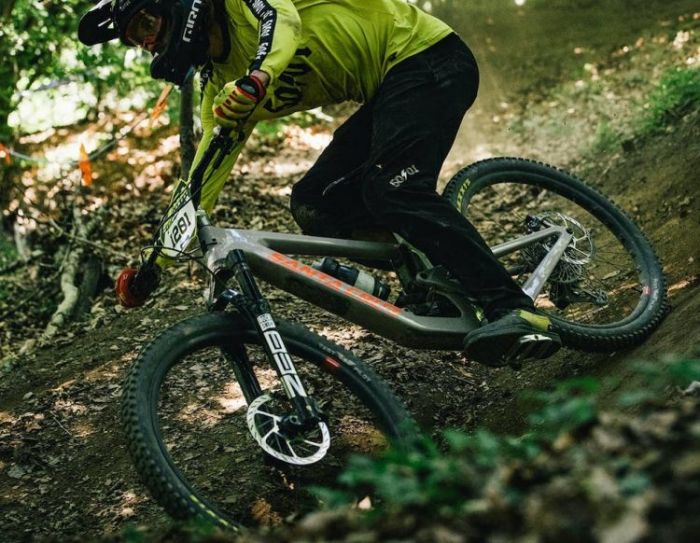Rocky Mountain Instinct Carbon 90 Review
- Price: $9799
- Frame: Carbon
- Tires: Maxxis Minion DHF
- Gear: 1×12
What we like about it: The standout design and outstanding performance of this bike are truly impressive! The highly efficient suspension setup is very responsive, reducing impact and providing a comfortable and thrilling riding experience for the cyclist.
What we don’t like about it: Some riders may find the limited color options unsatisfying.
Rating: (4.9/5)
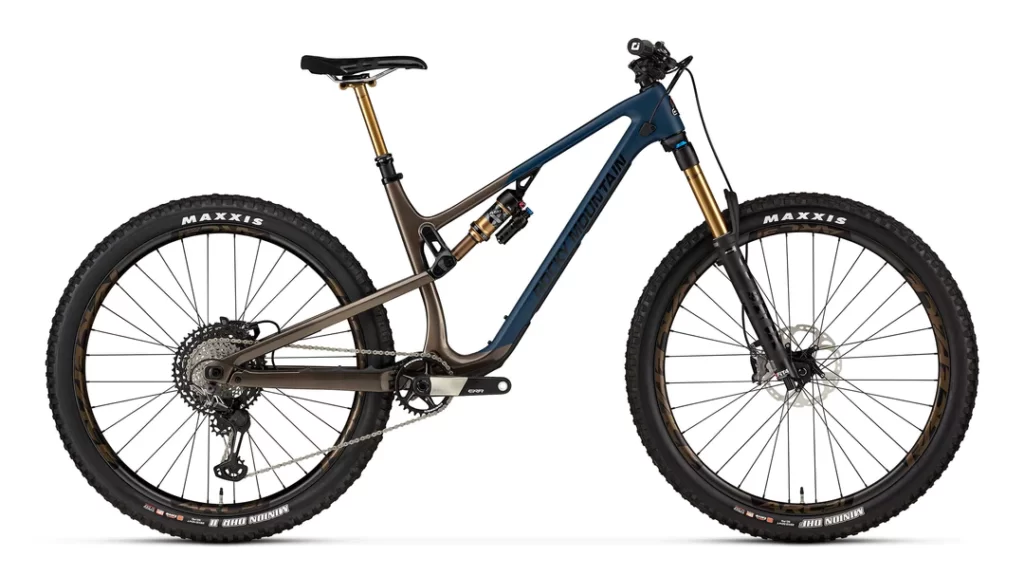
After conquering sandy terrains, attention has now turned to the high mountain forests, and the invention of full-suspension trail bikes to adapt to riding through the woods. These bikes demonstrate excellent performance in such terrains.
Though I have experienced many off-road bikes, we still came across the Rocky Mountain Instinct Carbon 90.
Now, let’s analyze the riding experience, main features, components, specifications, and other versions of the Rocky Mountain Instinct Carbon 90. In the latter part of this article, we will also compare it with several other top bike models. If you want to know more about bike reviews, feel free to follow us.
Riding Experience
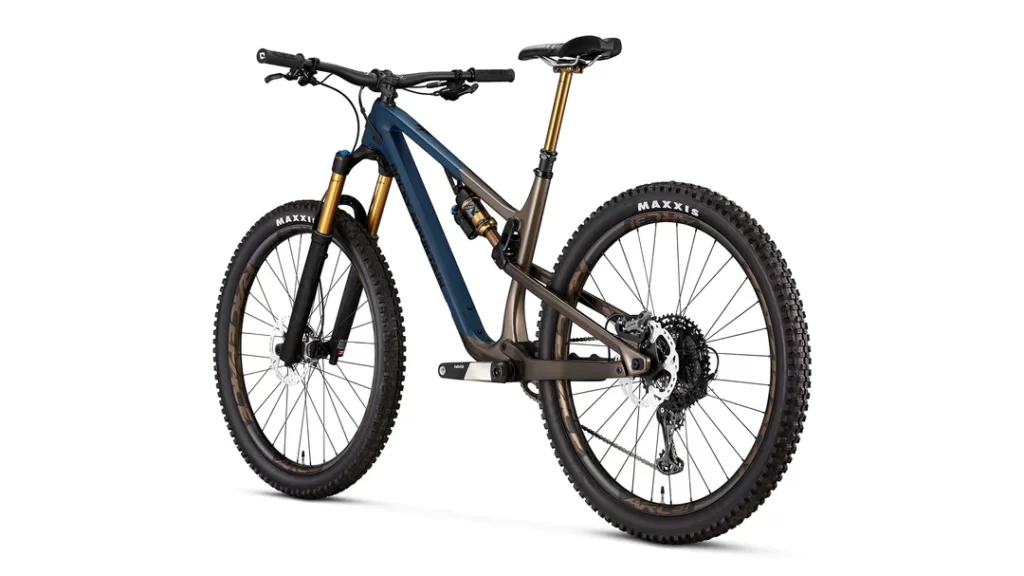
To better test the Rocky Mountain Instinct Carbon 90, I booked my flight and reserved a hotel through IHG to go to “The Gorge” Mountain Bike Park.
I selected the Bermed As trail at “The Gorge” Mountain Bike Park. This trail is 1.3 miles long, with an overall downhill trend and a 1067ft altitude drop. There are steep uphill and downhill slopes, and many sharp bends. The angles are significant, and the road surface is filled with protruding rocks and dry branches, which posed quite a challenge to my ride.
Trail Riding
Setting off on the trail, I accelerated and pedaled, skillfully adjusting the Shimano XTR rear derailleur to different gear ratios based on the slopes and road conditions, providing powerful thrust as I sped through the woods. It felt liberating, and I thoroughly enjoyed it.
During downhill sections, the ODI Elite Pro Lock-On grips allowed me to firmly grip the Race Face Next R handlebar, even with frequent small vibrations during high-speed riding. The ODI Elite Pro Lock-On grips provided excellent shock absorption, ensuring my hands stayed secure on the bike, which effectively ensured my safety.
As I approached an uphill, I adjusted the Shimano XTR rear derailleur to the smallest gear ratio, stood up, and accelerated. Using the dropper, I lowered the seat height to avoid any collision between my legs and the saddle. As I reached the peak of the uphill, I leaped forward, adjusting my posture in mid-air, preparing for impact. This bike is equipped with 150mm front travel and 140mm rear travel, and the suspension performs exceptionally well. I didn’t feel much bumpiness; it was truly thrilling.
As I entered the bends, I controlled the Race Face Next R handlebar, continually adjusting my center of gravity, leaning the bike at different angles in different bends, and finding various points of support and entry. I skillfully navigated through each turn with confidence, thanks to the Maxxis Minion DHF tires, which provided incredible traction and grip. This is the confidence that the Maxxis Minion DHF tires instilled in me.
Is that all?
The Rocky Mountain Instinct Carbon 90 is equipped with a WTB Volt Race 142 saddle designed for speed and comfort, featuring a central depression to relieve pressure on sensitive areas. The material used also protects the corners and sides of the saddle from tearing.
Notably, it comes with Maxxis Minion DHF tires of different sizes for the front and rear wheels. The front wheel has the Maxxis Minion DHF 2.5 WT 3C MaxxTerra EXO+ Tubeless Ready, while the rear wheel has the Maxxis Minion DHF 2.4 WT 3C MaxxTerra EXO+ Tubeless Ready. Both are tubeless ready and feature EXO+ puncture protection. The wider front tire enhances grip and stability in bends, while the relatively narrower rear tire adds agility to the bike and reduces the tendency to lean. The tire surface provides effective friction, making it easier to control and grip.
Moreover, this bike comes with ODI Elite Pro Lock-On grips. Their ergonomic design ensures they do not feel bulky. Padded in the right places, they provide a comfortable grip. The variable knurl pattern ranges from smooth to sharp texture, providing a powerful grip without causing discomfort to my hands.
Specifications
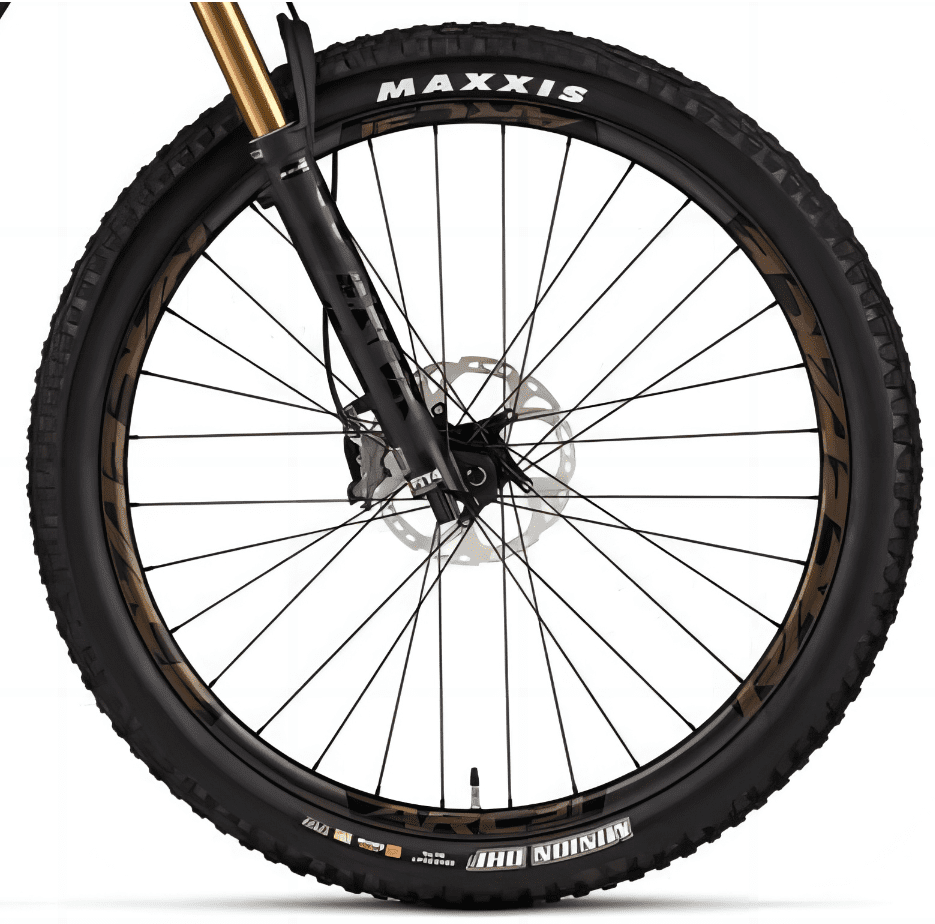
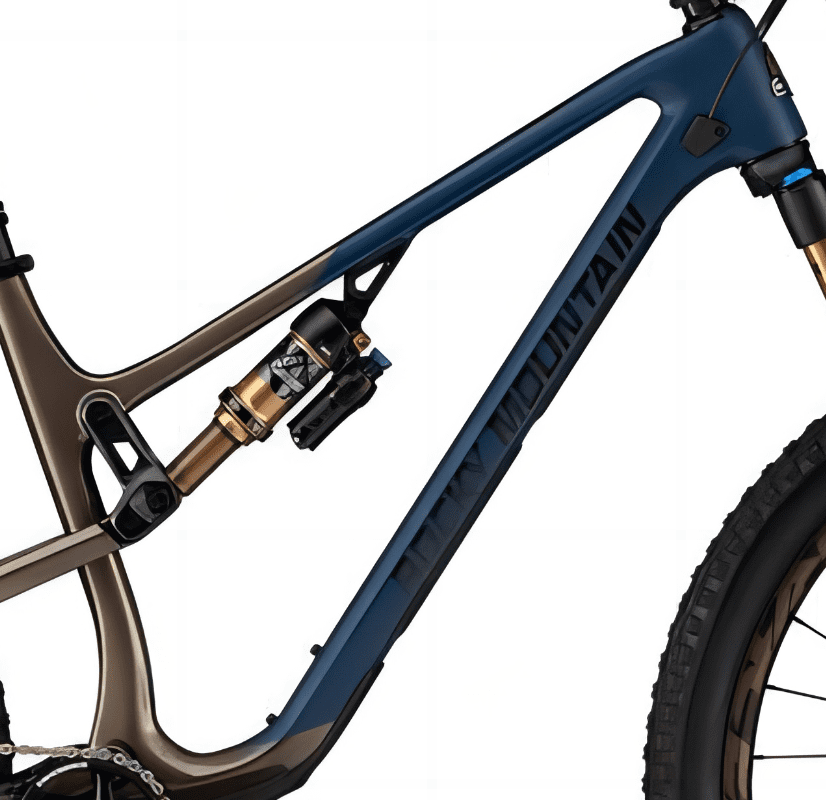
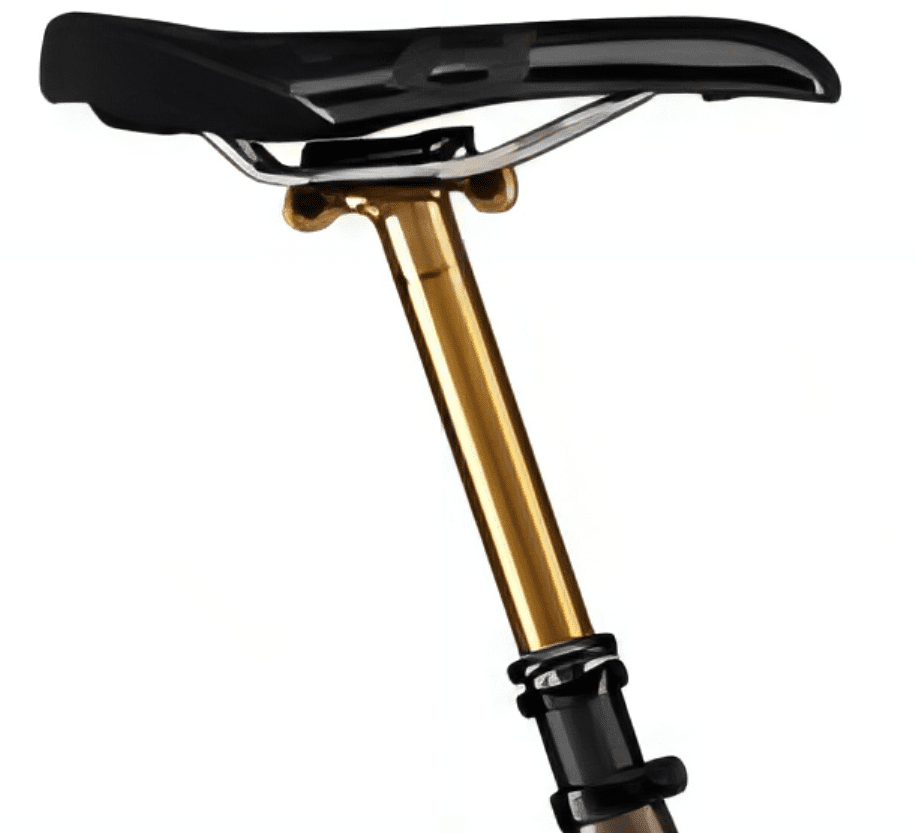
The Rocky Mountain Instinct Carbon 90 is an outstanding full-suspension trail bike. It features a SMOOTHWALL™ Carbon frame and Fox 36 Float EVOL FIT4 Factory Series fork.
Furthermore, it has Maxxis Minion DHF 2.5 WT 3C MaxxTerra EXO+ Tubeless Ready front tires and Maxxis Minion DHR II 2.4 WT 3C MaxxTerra EXO+ Tubeless Ready rear tires. Although of different sizes, both have 3C MaxxTerra compound and EXO+ puncture protection, making riding effortless and safe.
Additionally, it is equipped with a Shimano XTR Rear Derailleur, providing smooth and precise shifting. The Rocky Mountain Instinct Carbon 90 also comes with a WTB Volt Race 142 saddle, offering a comfortable riding experience.
Video
Other Versions
After numerous tests, we have a deeper understanding of this bike. The Rocky Mountain Instinct Carbon 90 is an outstanding hardtail mountain bike.
However, many riders may have their requirements for performance and components, so we explored other similar bikes for further investigation.
Rocky Mountian Instinct Alloy 10
The geometry of these two bikes is the same. However, the Rocky Mountain Instinct Carbon 90 has a carbon frame and carbon wheels, making it lighter. Yet, it may be more prone to breaking upon side impacts. On the other hand, the Rocky Mountain Instinct Alloy 10’s aluminum frame and aluminum wheels are more robust.
Moreover, the Mountain Instinct Carbon 90 has a 1×12 drivetrain, offering smoother shifting and a wider range compared to the 1×11 drivetrain on the Mountain Instinct Alloy 10.
The Rocky Mountain Instinct Alloy 10 is almost $7000 cheaper than the Rocky Mountain Instinct Carbon 90. Therefore, the Mountain Instinct Alloy 10 is more suitable for beginners, while the Mountain Instinct Carbon 90 is better for experienced riders.
What do we like about it?
- Highly efficient suspension setup, reducing impact for a comfortable ride.
- RIDE-9 adjustment system and 2-position rear axle for adjusting rear chainstay length.
- Six different frame sizes, specific suspension kinematics, and two sizes for the wheels to design a more suitable bike for every rider.
- Versatility for long rides, climbing, and descending, making it an ideal weapon for all riders.
What don’t we like about it?
- Limited color options may not satisfy some riders’ preferences.
FAQ
- Is this bike suitable for beginners?
It is suitable for both beginners and experienced riders.
- How many water bottle mounts does this bike have?
This bike has a water bottle mount.
- What’s the braking system of this bike?
It has the Shimano XTR Trail 4 Piston | IceTec Metal Pads Hydraulic Disc braking system.
- How do I choose the right size?
The size chart is below:
These sizes are only general guidelines and the true fit may vary from person to person. The easiest way to find your size the best way is to try it out.
| Rider height | SIZE |
| 4’8″ – 5’3″ | XS |
| 5’1″ – 5’6″ | SM |
| 5’5″ – 5’10” | MD |
| 5’8″ – 6’3″ | LG |
| 6’1″ – 6’6″ | XL |
Rocky Mountain Instinct Carbon 90 Specs
Build
| Frame | SMOOTHWALL™ Carbon | Full Sealed Cartridge Bearings | Press Fit BB | Internal Cable Routing | 2-Bolt ISCG05 Tabs | RIDE-9™ Adjustable Geometry | 2 Position Axle | 140mm Travel. SMOOTHWALL™ Carbon Rear TriangleBB Standard: BB86/BB92, Press FitColor: Brown / Blue |
| Fork | Fox 36 Float EVOL FIT4 Factory Series 150mm | 27.5 = 37mm Offset | 29 = 44mm Offset |
| Rear Shock | Fox Float X Factory | Sealed Bearing Eyelet | 25x8mm F Hardware | XS – SM = 190x45mm | MD – LG – XL = 210×52.5mm | MD – LG – XL = 210×52.5mm | Size-Specific Tune in FAQ |
| Bottom Bracket | Race Face BB92 30mm |
| Headset | FSA Orbit NO.57E | Sealed Stainless 36°x45° Bearings | 30.2mm x 41mm x 7.1mm Upper | 40mm x 51.8mm x 7.5mm Lower | 1.5″ Crown Race |
| Stem | Rocky Mountain 35 CNC | 0° Rise | All Sizes = 40m |
| Handlebar | Race Face Next R | 780mm Width | 20mm Rise | 8° Backsweep | 4° Upsweep | 35mm Clamp |
| Saddle | WTB Volt Race 142 |
| Seatpost | Fox Transfer Factory Series 30.9mm | XS – SM = 125mm | MD = 150mm | LG = 175mm | XL = 200mm |
| Grips | ODI Elite Pro Lock On |
Groupset
| Rear Derailleur | Shimano XTR |
| Crank | Race Face Era Cinch | 32T | 30mm Spindle | Crank Length = 170mm |
| Shifters | Shimano XTR |
| Cassette | Shimano XTR 12s 10-51T |
| Chain | Shimano XTR 12s |
| Brakes | Shimano XTR Trail 4 Piston | IceTec Metal Pads | F:Shimano RT86 180mm | R:Shimano RT86 180mm |
Wheels
| Rims | Race Face ARC Carbon 31 | 32H | Tubeless Ready – Tape / Valves Incl |
| Spokes | DT Swiss Competition 2.0/1.8/2.0 |
| Front Hub | Rocky Mountain Sealed Boost 15mm |
| Rear Hub | DT Swiss 350 Boost 148mm | 36T Star-Ratchet |
| Tires | F: Maxxis Minion DHF 2.5 WT 3C MaxxTerra EXO+ Tubeless Ready // R: Maxxis Minion DHR II 2.4 WT 3C MaxxTerra EXO+ Tubeless Ready |
Comparison Table
| Bikes | Click view | Tires | Drivetrain | Frame Material | Groupset |
| Trek Top Fuel 9.9 XTR | Click View | Bontrager XR4 Team Issue | 1 x 12 | Carbon | Shimano XTR,e*thirteen TRS Race |
| Yeti SB130 TLR T2 | Click View | MAXXIS ASSEGAI 2.5 EXO+ | 1 x 12 | Carbon | SRAM X01 Eagle,X1 |
| Scott Spark 900 Tuned AXS | Click View | Schwalbe Wicked Will 29×2.4″ | 1×12Electronic | Carbon | SRAM X01 Eagle AXS,GX Eagle AXS |
| Santa Cruz 5010 GX AXS RSV / Carbon C | Click View | Maxxis Minion DHR II 29 “x2.4” | 1×12Electronic | Carbon | SRAM GX Eagle AXS |
Rocky Mountain Instinct Carbon 90 vs Trek Top Fuel 9.9 XTR
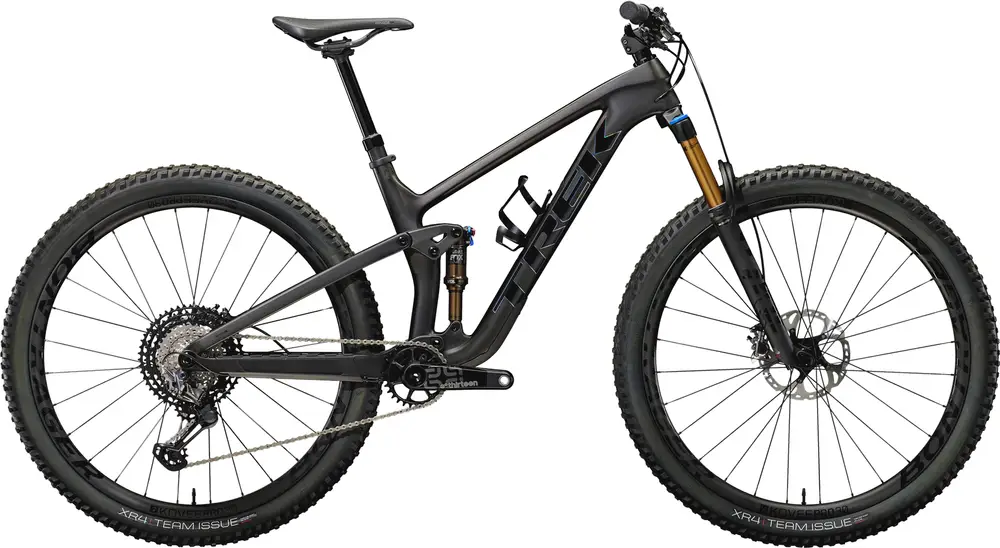
The Rocky Mountain Instinct Carbon 90 is equipped with a Fox Factory Float 36 fork, while the Trek Top Fuel 9.9 XTR comes with a Fox Factory Float 34 fork. The Float 36 fork provides longer travel, offering better suspension performance. Its arch design provides more clearance, exhaust ports, and an updated grip2 damper, making it an excellent endurance front fork. On the other hand, the Float 34 fork is a versatile option that is also compatible with the grip2 damper, and it comes at a more affordable price.
Additionally, the Rocky Mountain Instinct Carbon 90 offers two wheel sizes, 27.5″ and 29″. The 29″ wheels provide better rollover capability, while the 27.5″ wheels offer more agility. So, if you want more size options for the wheel, the Rocky Mountain Instinct Carbon 90 is a great choice. If you prefer a more budget-friendly option for the fork and bike, the Trek Top Fuel 9.9 XTR can meet your needs.
Learn More: Is Trek Top Fuel 9.8 XT Worth Buying ? [Trek Top Fuel 9.8 XT Review]
Rocky Mountain Instinct Carbon 90 vs Yeti SB130 TLR T2
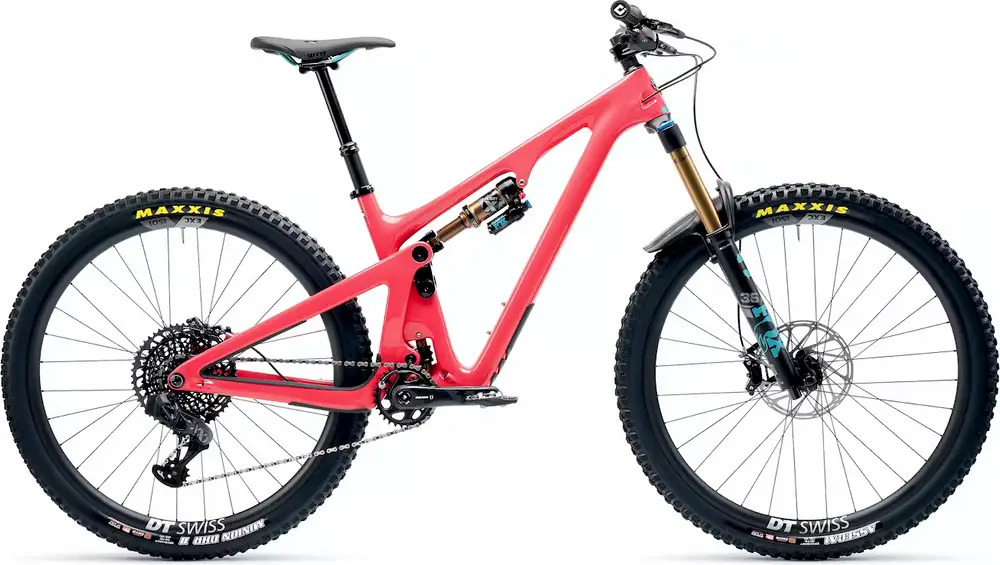
The Yeti SB130 TLR T2 comes with more durable aluminum wheels, while the Rocky Mountain Instinct Carbon 90 offers a wider range of size choices with carbon wheels. It can be said that each has its advantages.
However, the Yeti SB130 TLR T2 is equipped with 160mm front travel and 137mm rear travel, while the Rocky Mountain Instinct Carbon 90 has 150mm front travel and 140mm rear travel. It is evident that the Rocky Mountain Instinct Carbon 90 provides stronger suspension performance, but the front travel’s suspension effect is slightly weaker.
In conclusion, if you prefer more robust wheels, the Yeti SB130 TLR T2 would be the better choice. If you want more options for wheel sizes, the Rocky Mountain Instinct Carbon 90 can better meet your needs.
Learn More: Is Yeti SB130 C1 Splendid – [Yeti SB130 C1 Review]
Rocky Mountain Instinct Carbon 90 vs Scott Spark 900 Tuned AXS
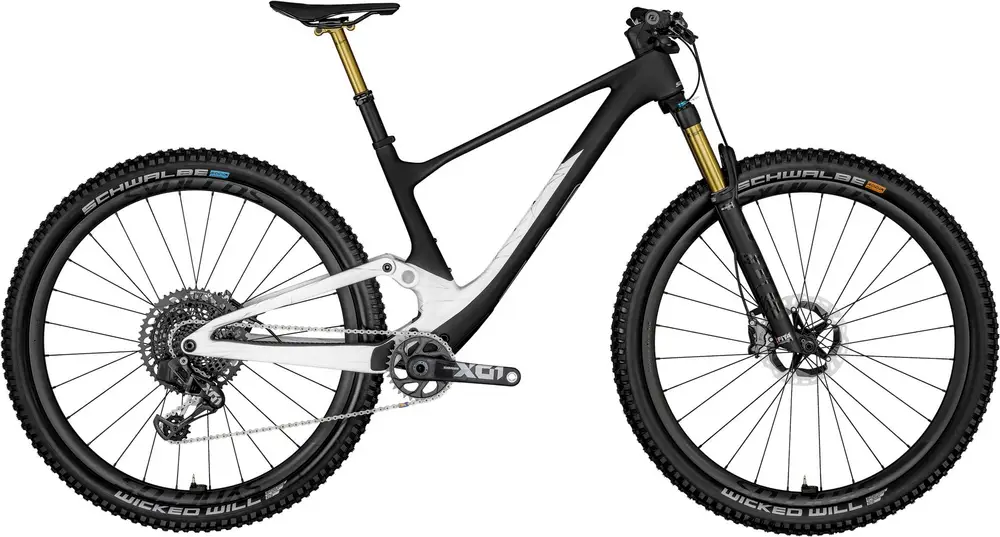
The Scott Spark 900 Tuned AXS is equipped with a 1×12 Electronic drivetrain, and the electronic shifter provides very precise and consistent gear changes. It can also be adjusted to automatic mode, which automatically adapts the gear ratio based on the intensity and speed of the ride, but it requires timely charging. In this aspect, the mechanical drivetrain used in the Scott Spark 900 Tuned AXS is very convenient. While it may require more maintenance compared to electronic drivetrains, it is simpler to repair.
Additionally, the Rocky Mountain Instinct Carbon 90 offers two size options for the wheel and has stronger suspension performance. So, if you prefer a more precise electronic drivetrain, I would recommend the Scott Spark 900 Tuned AXS. If you prefer a traditional drivetrain, the Rocky Mountain Instinct Carbon 90 would be your best choice.
Learn More: Is Scott Spark 970 Worth Buying? – [Scott Spark 970 Review]
Rocky Mountain Instinct Carbon 90 vs Santa Cruz 5010 GX AXS RSV / Carbon C
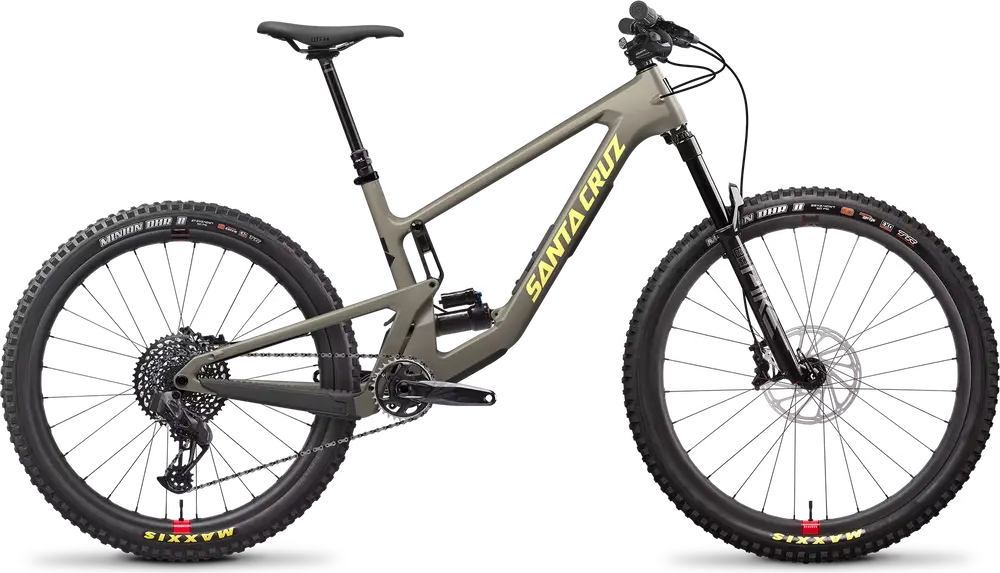
The Santa Cruz 5010 GX AXS RSV / Carbon C has a Stack/Reach Ratio of 1.36, which is greater than the Rocky Mountain Instinct Carbon 90’s Stack/Reach Ratio (1.3). This means riders can have better stretchability and a more comfortable riding experience on the Santa Cruz bike. However, the Rocky Mountain Instinct Carbon 90 has a head tube angle of 66.2°, which is greater than the Santa Cruz 5010 GX AXS RSV / Carbon C’s head tube angle (65.2°). As a result, the Santa Cruz bike offers a more stable ride.
Additionally, the Rocky Mountain Instinct Carbon 90 rides faster, reaching speeds of up to 28mph, whereas the Santa Cruz 5010 GX AXS RSV / Carbon C can reach up to 26mph. In conclusion, if you want a faster ride, the Rocky Mountain Instinct Carbon 90 will better suit your needs. If you prioritize a more comfortable ride, the Santa Cruz 5010 GX AXS RSV / Carbon C would be the better choice.
Learn More: Is Santa Cruz 5010 X01 A Good Bike? [Santa Cruz 5010 X01 Review]
Summary
The above is our complete review of the Rocky Mountain Instinct Carbon 90. This outstanding full-suspension mountain bike offers an excellent riding experience. Considering all aspects, we give it a high rating of 4.9. If you want to learn more about bikes, feel free to check out our other reviews.
Lastly, if you enjoyed our content, please share it with your friends. If our content was helpful to you, you can click the subscribe button below. Thank you for your support!

![[Orbea URRUN 10 20mph Review] – Best Used By People Who Enjoy Riding To Get AFeel For The Mountains!](https://bestbikeselect.com/wp-content/uploads/2023/09/2023-Orbea-URRUN-10-20mph-35_-1024x1024.jpg)
![[Specialized Turbo Como 5.0 Review] – Good Choice?](https://bestbikeselect.com/wp-content/uploads/2023/08/2023-Specialized-Turbo-Como-5.01_-1024x1024.webp)
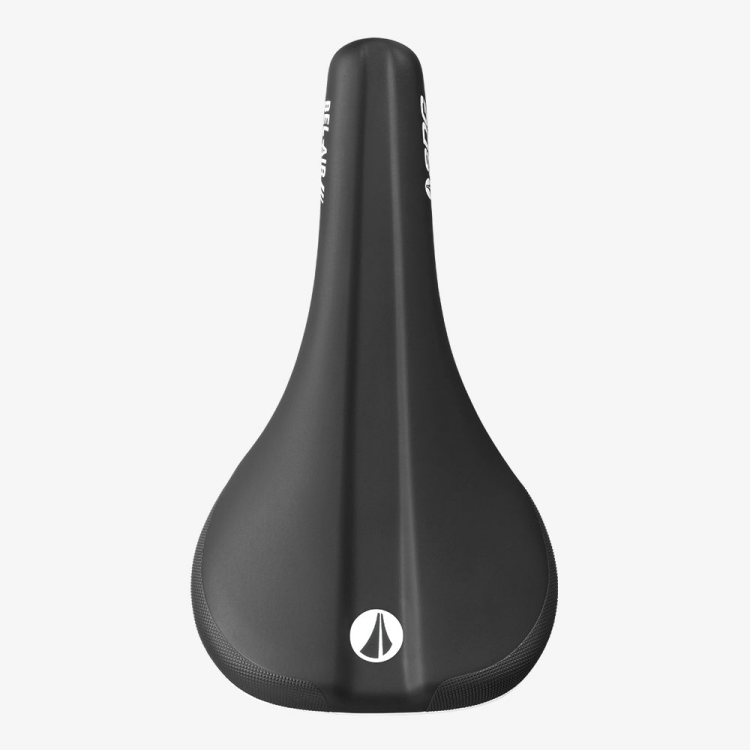
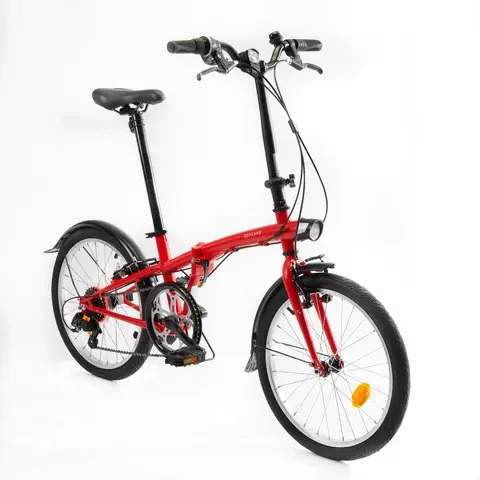

![2025 Built for Champions:[Orbea ORCA M21eTEAM PWR Review]](https://bestbikeselect.com/wp-content/uploads/2025/01/ORCA-M21eTEAM-PWR-1024x885.jpg)
![2025 Conquer Any Trail [Santa Cruz Bronson R Review]](https://bestbikeselect.com/wp-content/uploads/2025/01/Santa-Cruz-Bronson-R-1-1024x768.webp)
![2025 The All-Terrain Beast [Santa Cruz Hightower 3 MY24 Review]](https://bestbikeselect.com/wp-content/uploads/2025/01/Santa-Cruz-Hightower-3-MY24-1024x768.webp)
![The Best Comfortable Leisure Bike of 2025 [ Trek Verve 2 Lowstep Gen 5 ]](https://bestbikeselect.com/wp-content/uploads/2024/12/Verve-2-Lowstep-Gen-5-02-1024x681.png)
![2025’s Top Endurance Bikes [Cannondale Synapse Carbon 3 L Review]](https://bestbikeselect.com/wp-content/uploads/2025/01/Cannondale-Synapse-Carbon-3-L-1-1024x627.webp)
